

Old Town Square
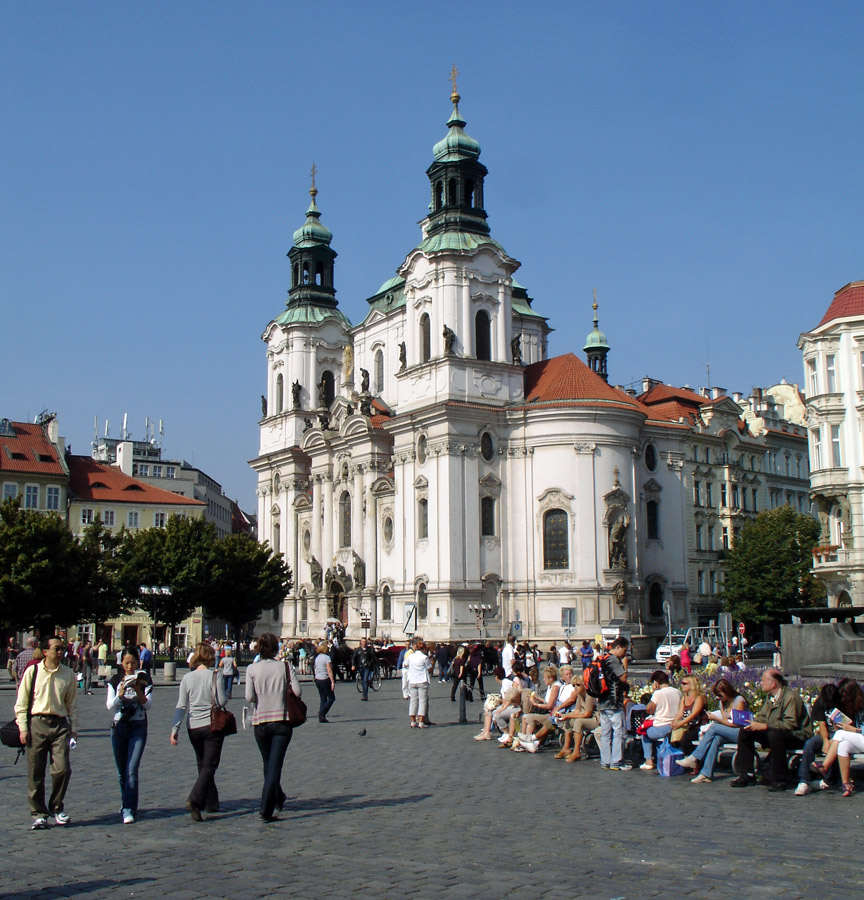
Old Town Square
St Nicholas church in the background
Old Town Square is a historic square in the Old Town quarter of Prague in the Czech Republic.

Located between Wenceslas Square and the Charles Bridge, Prague's Old Town
Square is often bursting at the seams with tourists in the summer. Featuring
various architectural styles including the gothic Týn Cathedral and baroque
St.
Nicholas Church, the square is an oasis for travelers wearied by Prague's narrow
streets. Among many churches, tourists may find the
Astronomical Clock on this
square, while the tower at the Old Town Hall offers a panoramic view of Old
Town.

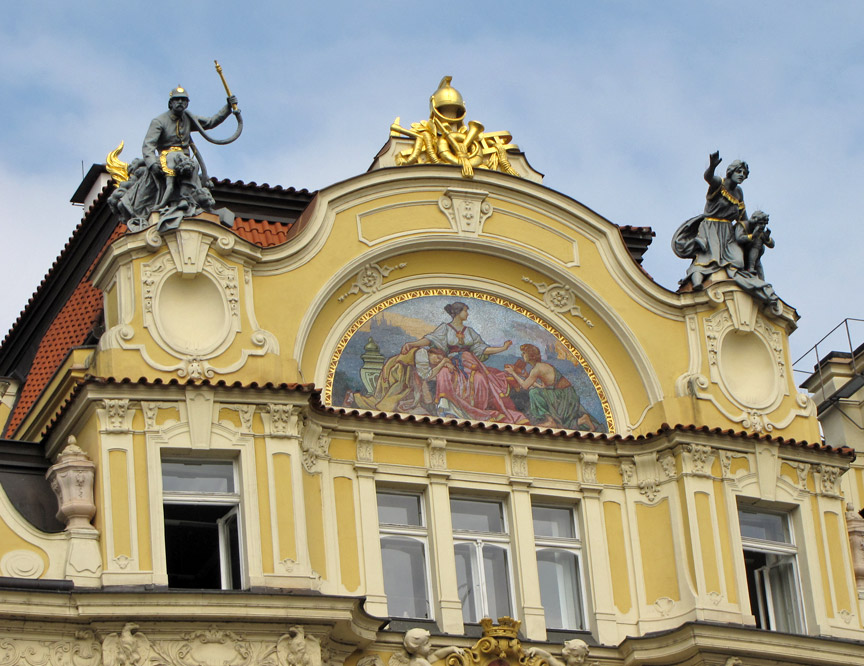
The square's center is home to a statue of religious reformer Jan Hus, who was
burned at the stake for his beliefs. The statue known as the
Jan Hus Memorial
was erected on July 6, 1915 to mark the 500th anniversary of his death.
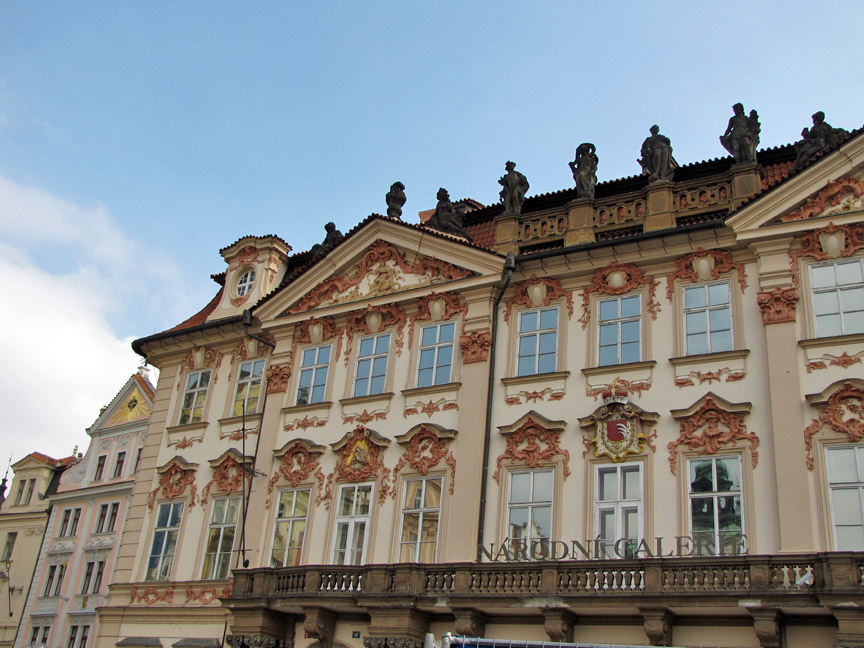
Kinsky Palace

Not only a popular meeting place, Old Town Square sees its share of celebrations (New Year's), holiday markets (Christmas and Easter), and protests. On occasion, hockey and football (soccer) games are shown on huge screens, drawing large crowds of fans.
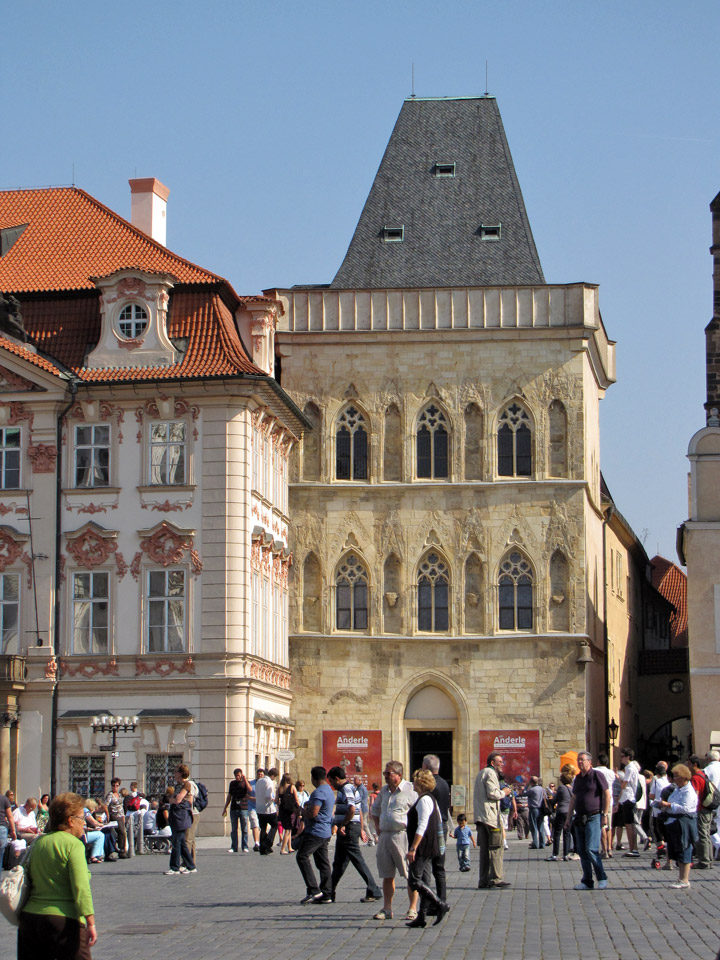
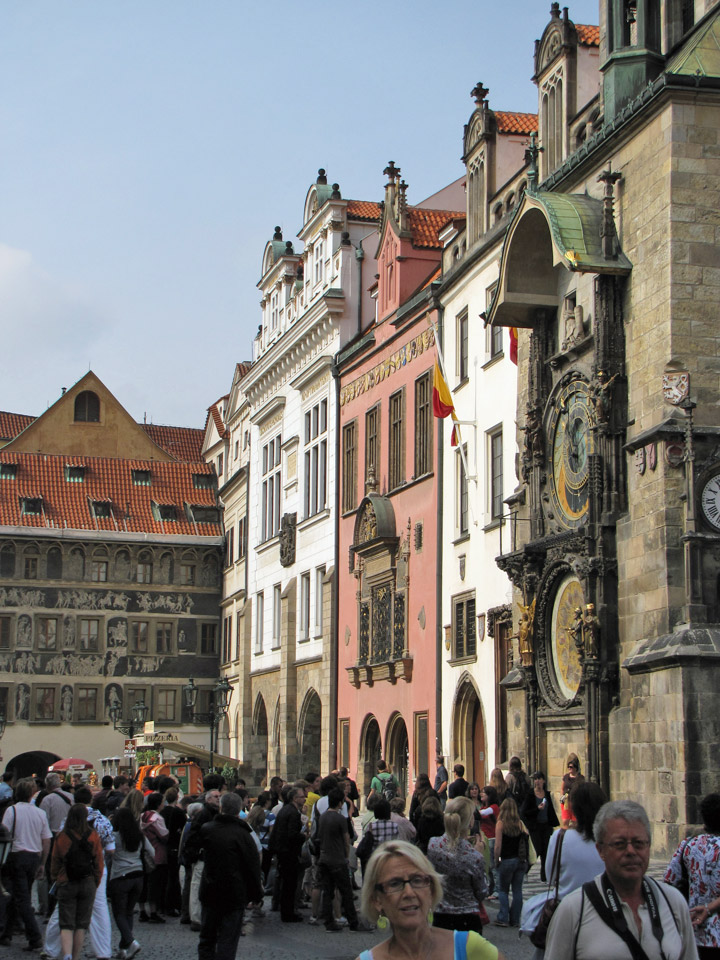
people gathered on the hour to observe the Astronomical Clock
if your Browser is set correctly you may now be hearing the hour action


Old Council Hall
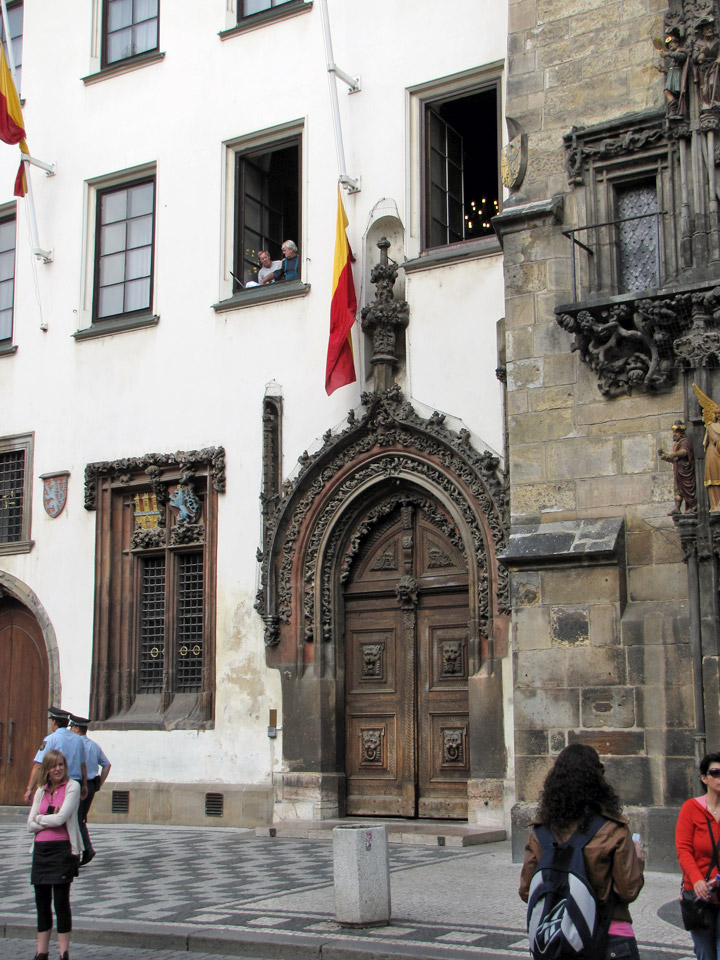
former house of Volflin Kamen
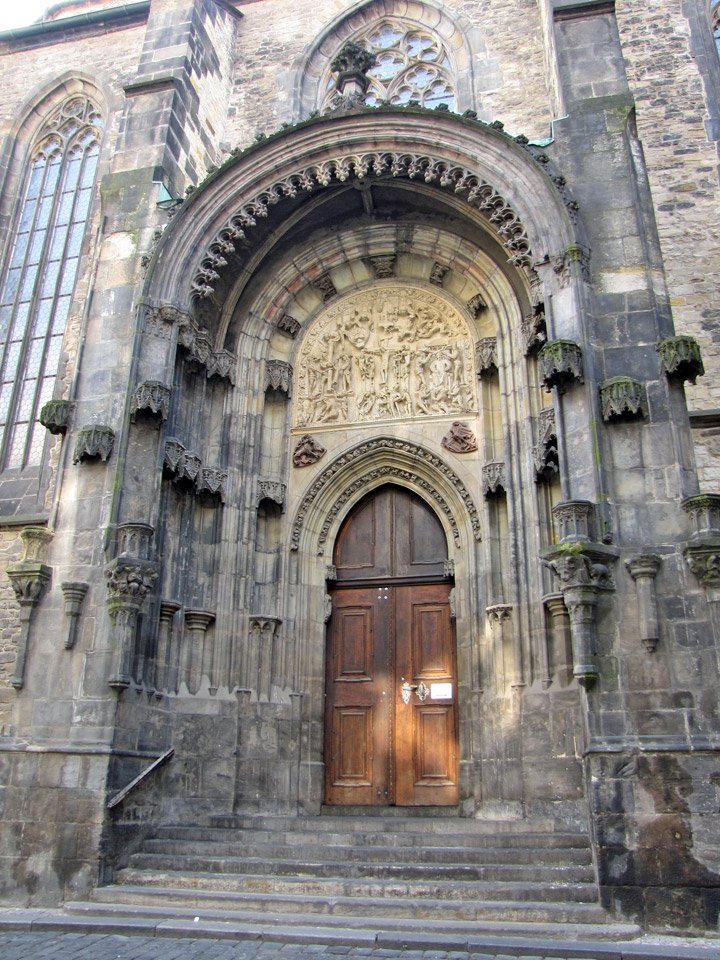
Gothic doorway to Old Town Hall
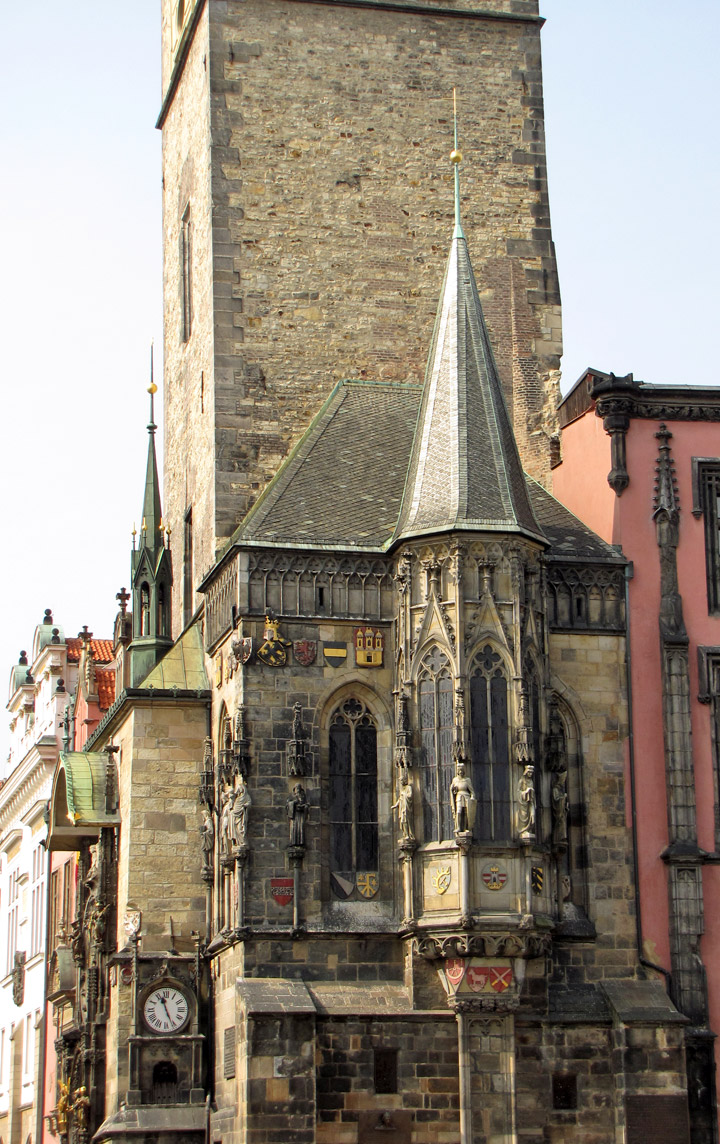
Oriel Chapel

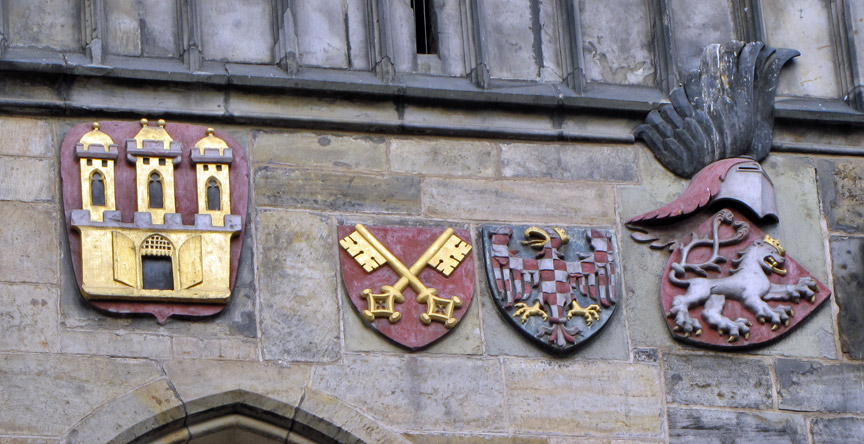
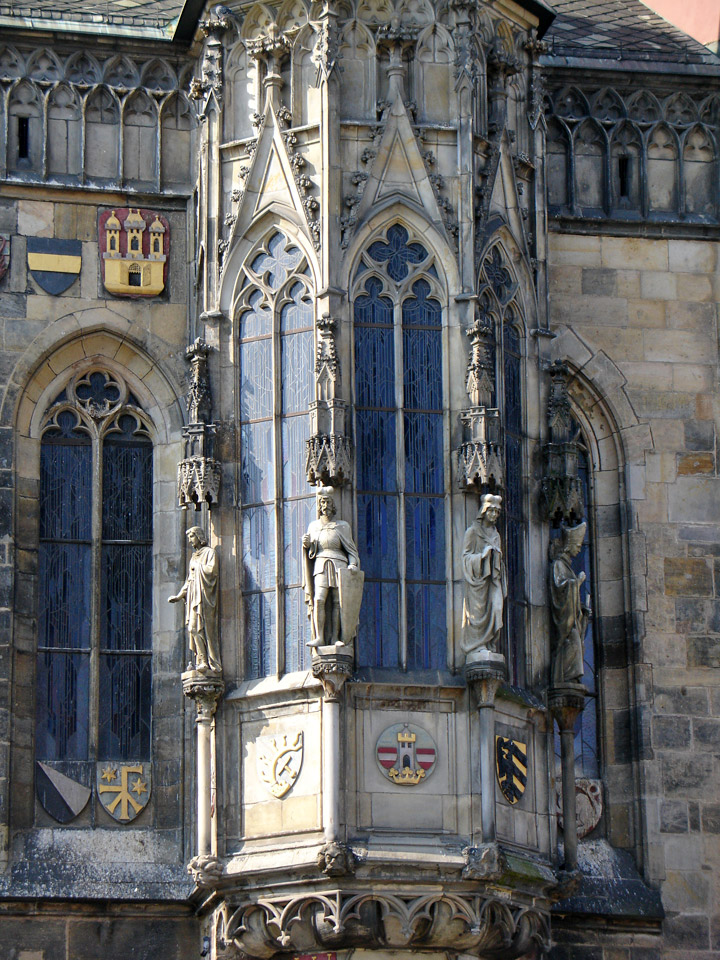
Oriel Chapel
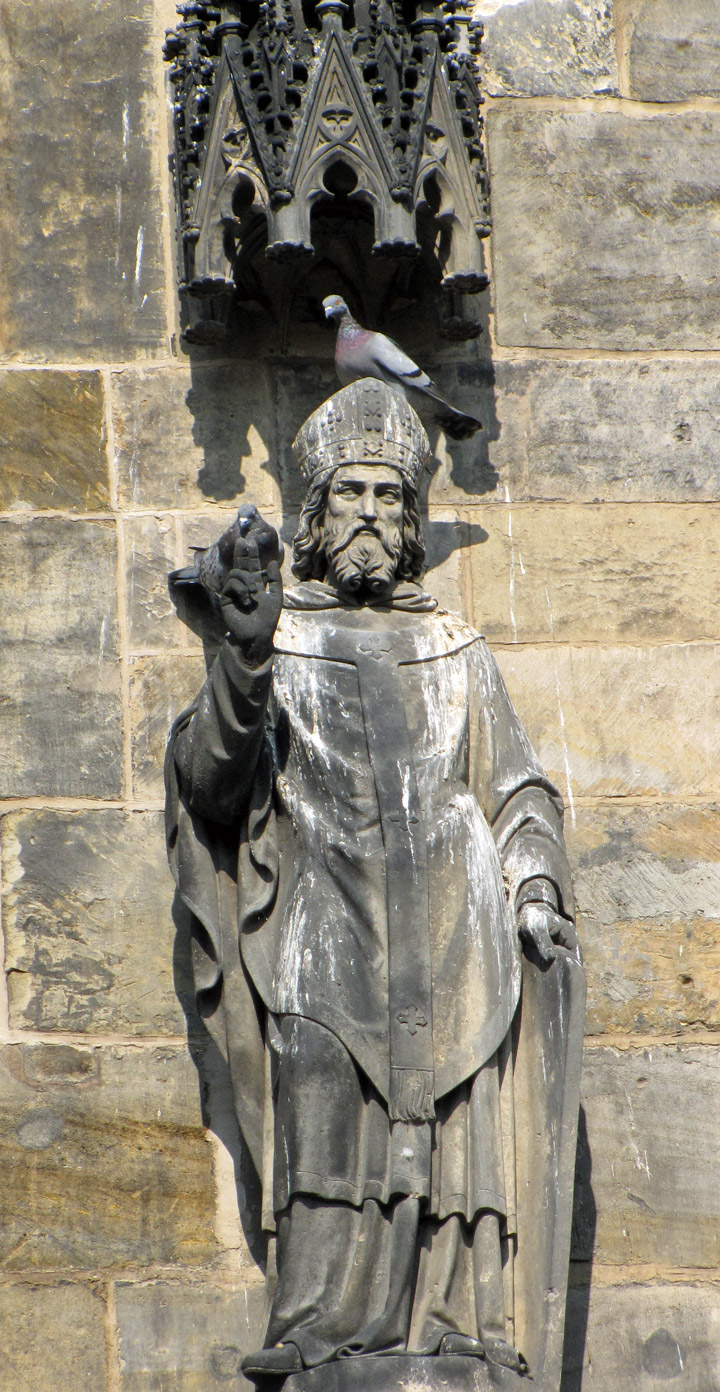
friend of the pigeons
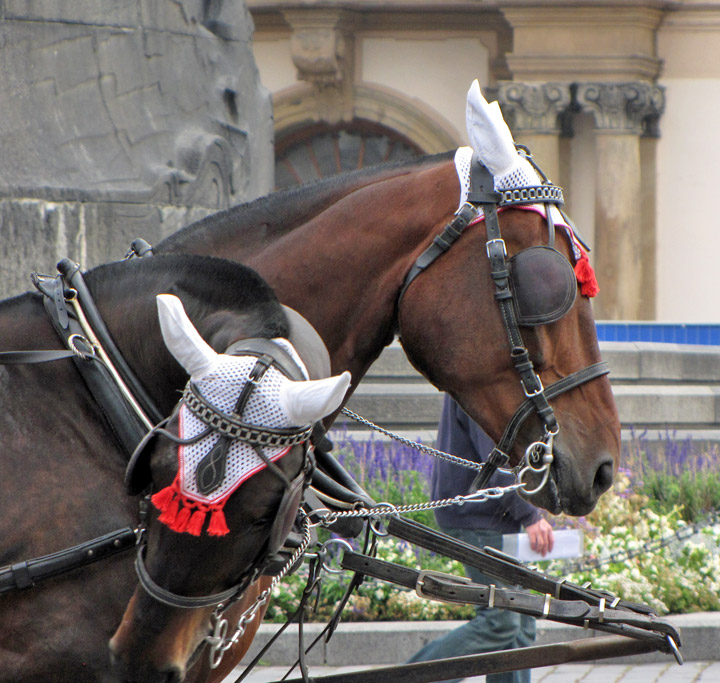
white ear covers

or red ear covers
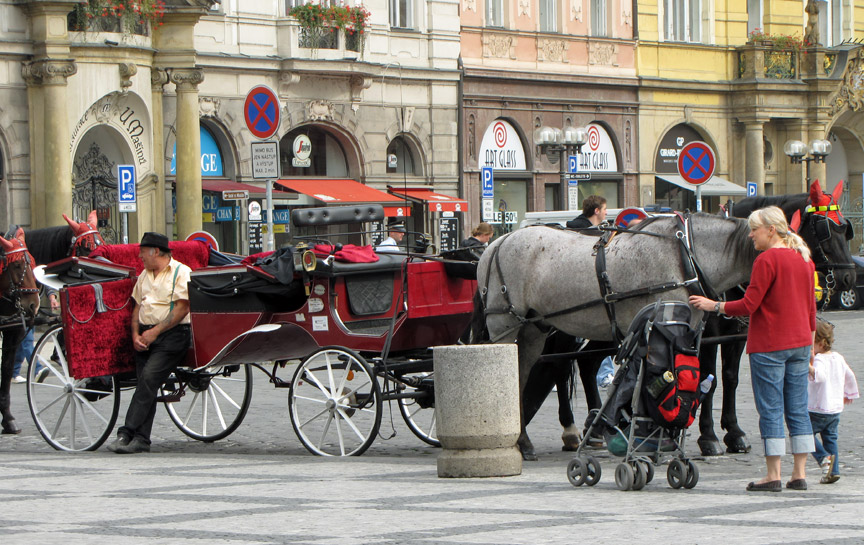
the horses are ready to take you around town in a carriage
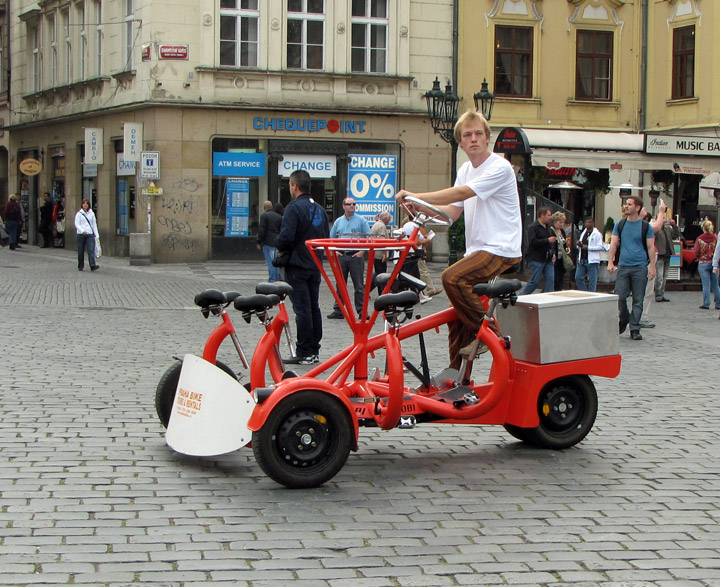
or you can help peddle yourself
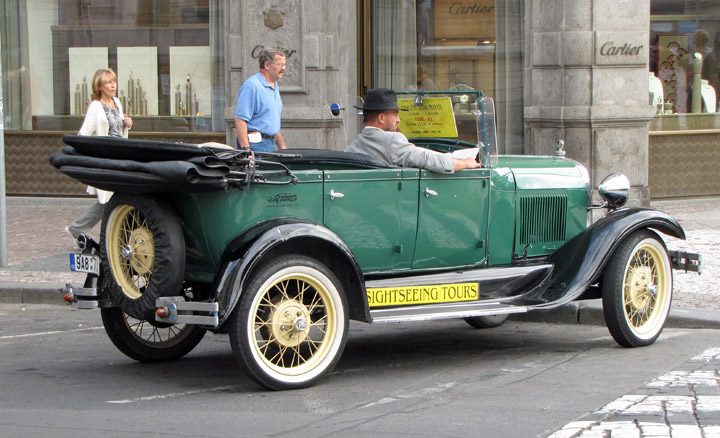
or ride in a vintage car
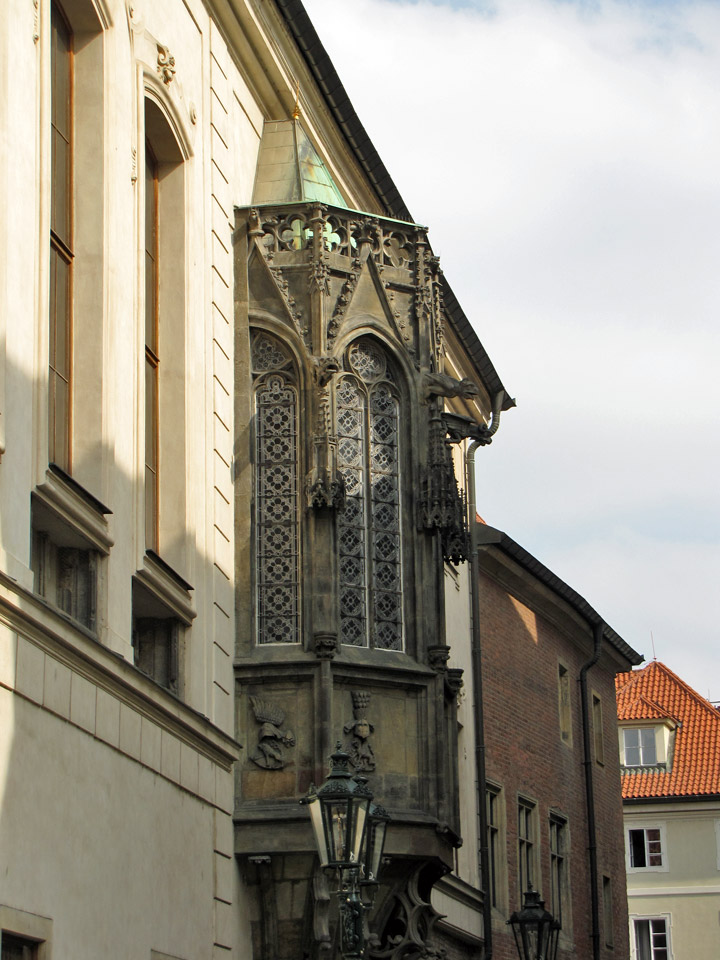
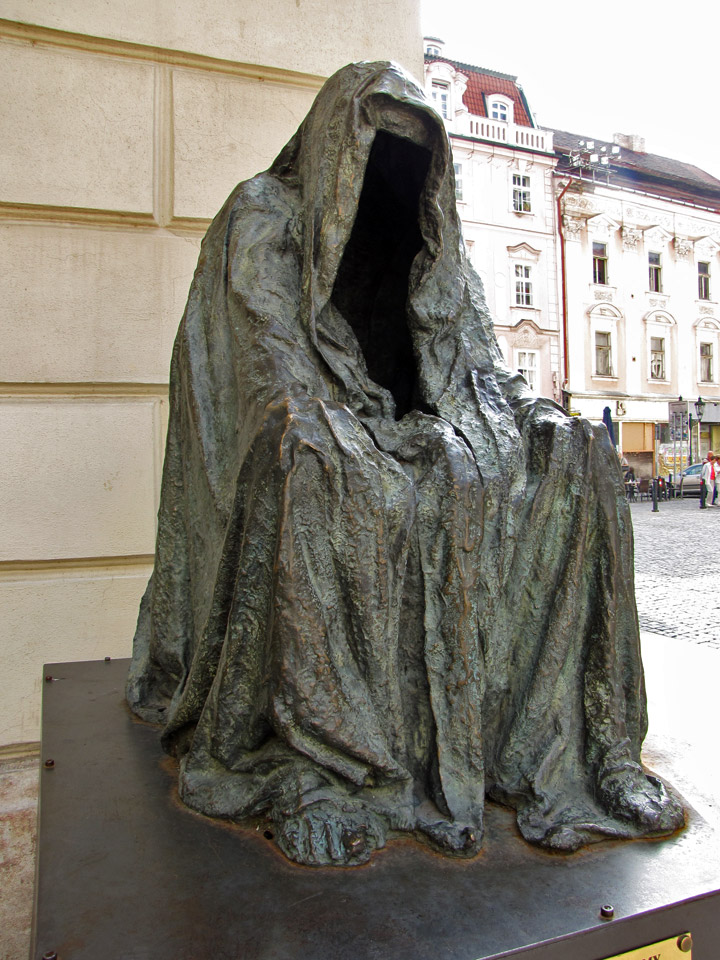


authorized city manhole cover
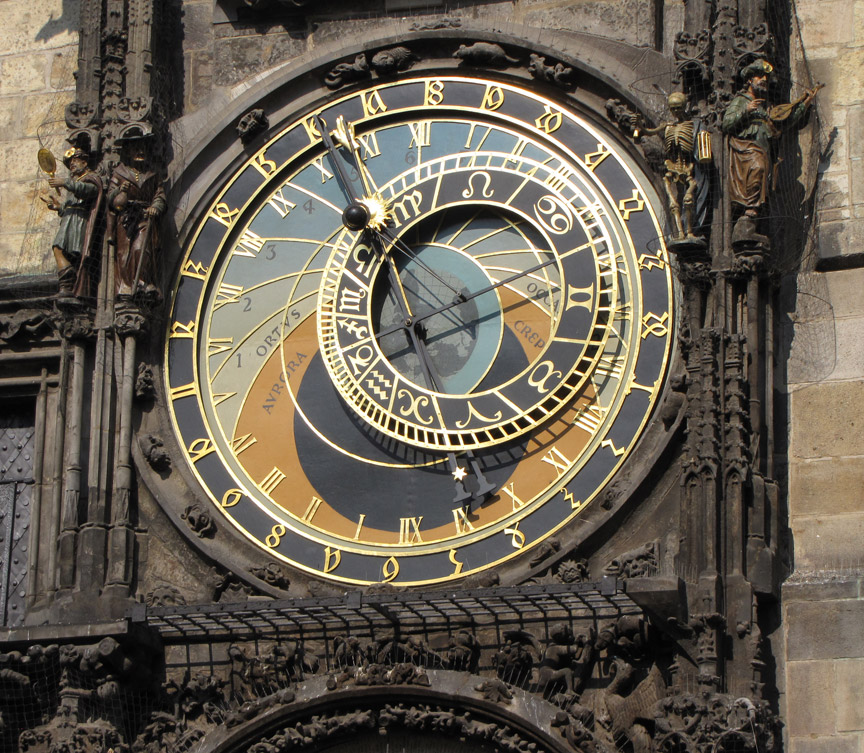
The Prague Astronomical Clock or Prague Orloj is a medieval astronomical clock located in Prague, the capital of the Czech Republic. The Orloj is mounted on the southern wall of Old Town City Hall in the Old Town Square and is a popular tourist attraction.
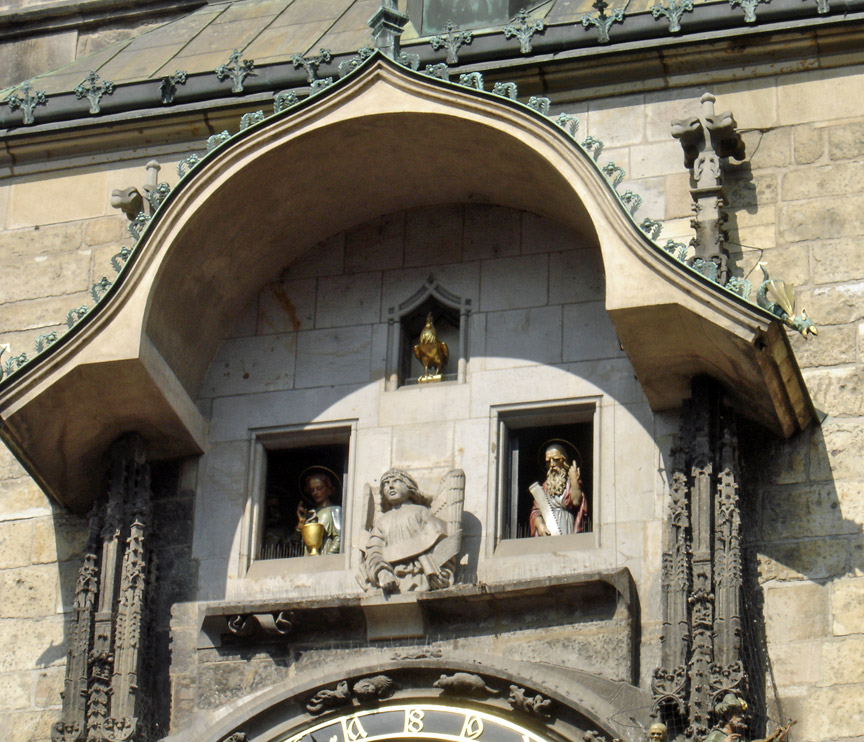
on the hour show of figures of the Apostles
The Orloj is composed of three main components: the astronomical dial,
representing the position of the Sun and Moon in the sky and displaying various
astronomical details; "The Walk of the Apostles", a clockwork hourly show of
figures of the Apostles and other moving sculptures; and a calendar dial with
medallions representing the months.
The oldest part of the Orloj, the mechanical clock and astronomical dial, dates
back to 1410 when it was made by clockmaker Mikuláš of Kadaň and Jan Šindel, the
latter a professor.
Later, presumably around 1490, the calendar dial was added and clock facade
decorated with gothic sculptures.
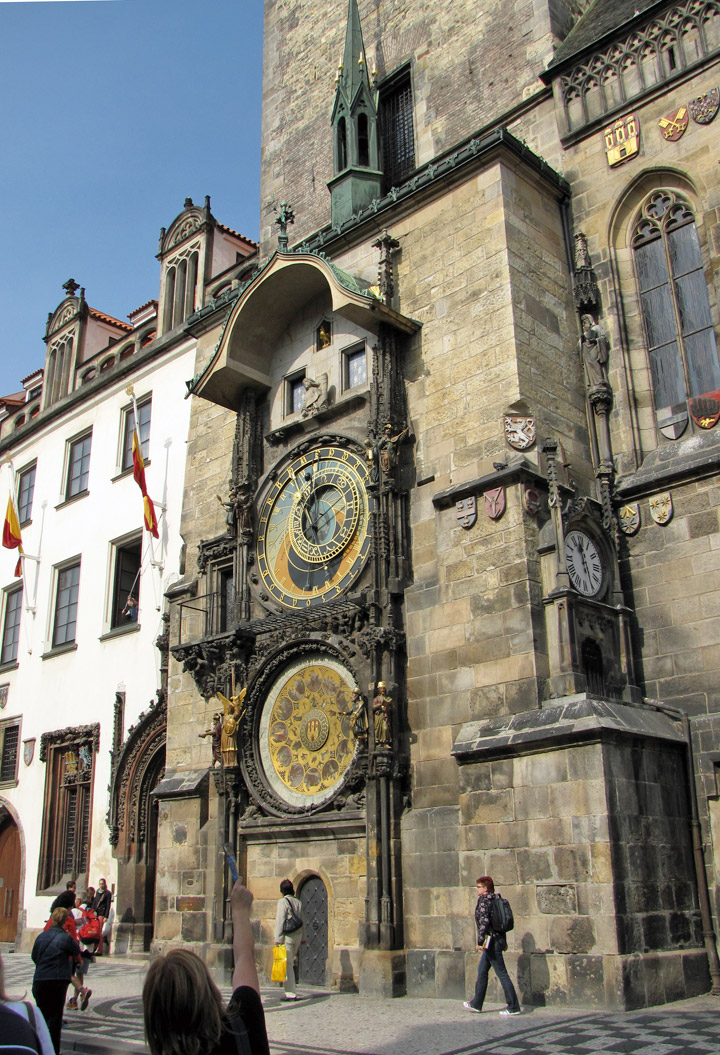
In 1552 it was repaired by Jan Taborský, clock-master of Orloj, who also wrote a
report on the clock where he mentioned Hanuš as maker of the clock. This was a
mistake, and was corrected during the 20th century.
The Orloj stopped working many times in the centuries after 1552, and was
repaired many times. Some speculate that the government purposely gouged out the
original maker's eyes in order to prevent him from making a similar clock for
another country. After this he died touching the clock, at which point the clock
stopped working and remained unrepairable for a number of years. In the 17th
century moving statues were added, and figures of the Apostles were added after
major repair in 1865-1866.
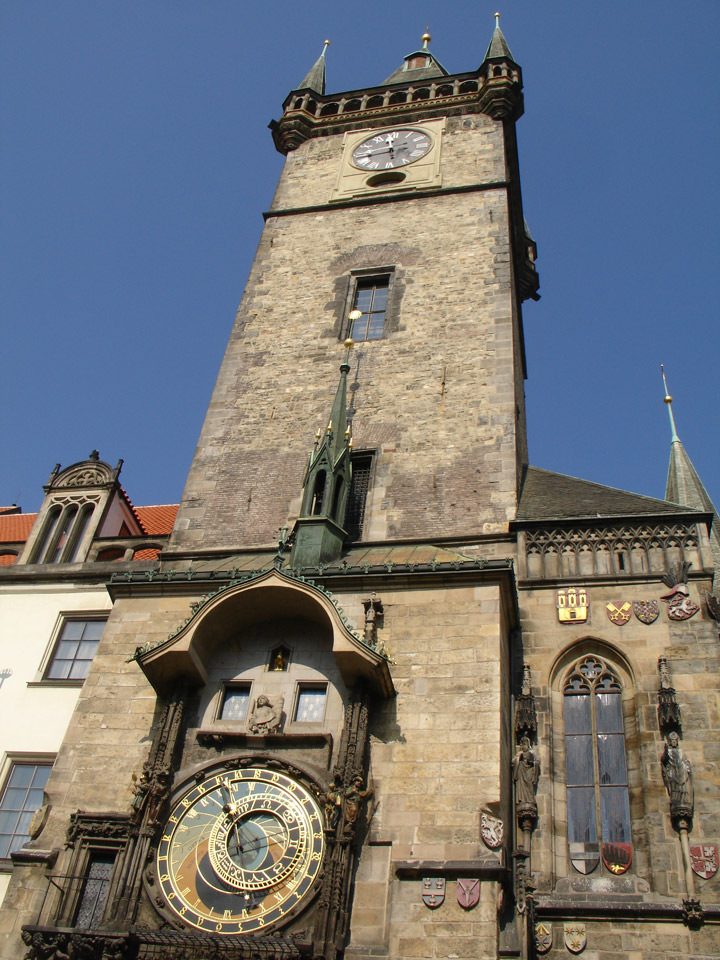
The Orloj suffered heavy damage on May 7 and especially May 8, 1945, during the
Prague Uprising, when Germans directed incendiary fire from several armored
vehicles and an anti-aircraft gun to the south-west side of the Old Town Square
in an effort to silence the provocative broadcasting initiated by the National
Committee on May 5. The hall and nearby buildings burned along with the wooden
sculptures on the Orloj and the calendar dial face made by Josef Mánes. The
machinery was repaired, the wooden Apostles restored by Vojtěch Sucharda, and
the Orloj started working again in 1948, but only after significant effort.
There exists a good deal of misinformation relating to the construction of the
Orloj. For a long time it was believed that the Orloj was constructed in 1490 by
clockmaster Jan Růže (also called Hanuš) and his assistant Jakub Čech. Another
fictitious story involves the clockmaker Hanuš being blinded on the order of the
Prague Councillors.

The astronomical dial is a form of mechanical astrolabe, a device used in
medieval astronomy. Alternatively, one may consider the Orloj to be a primitive
planetarium, displaying the current state of the universe.
The astronomical dial has a background that represents the standing Earth and
sky, and surrounding it operate four main moving components: the zodiacal ring,
an outer rotating ring, an icon representing the Sun, and an icon representing
the Moon.
The background represents the Earth and the local view of the sky. The blue
circle directly in the center represents the Earth, and the upper blue is the
portion of the sky which is above the horizon. The red and black areas indicate
portions of the sky below the horizon. During the daytime, the sun sits over the
blue part of the background and at night it sits over the black. During dawn or
dusk, the mechanical sun is positioned over the red part of the background.

Written on the eastern (left) part of the horizon is aurora (dawn in Latin) and
ortus (rising). On the western (right) part is occasus (sunset), and crepusculum
(twilight).
Golden Roman numbers at the outer edge of blue circle are the timescale of a
normal 24 hour day and indicate time in local Prague time, or Central European
Time. Curved golden lines dividing the blue part of dial into 12 parts are marks
for unequal hours. These hours are defined as 1/12 of the time between sunrise
and sunset, and vary as the days grow longer or shorter during the year.
Inside the large black outer circle lies another movable circle marked with the
signs of the zodiac which indicates the location of the sun on the ecliptic. The
signs are shown in anticlockwise order. In the photographs accompanying this
article, the sun is currently in Aries, and will be moving anticlockwise into
Taurus next.
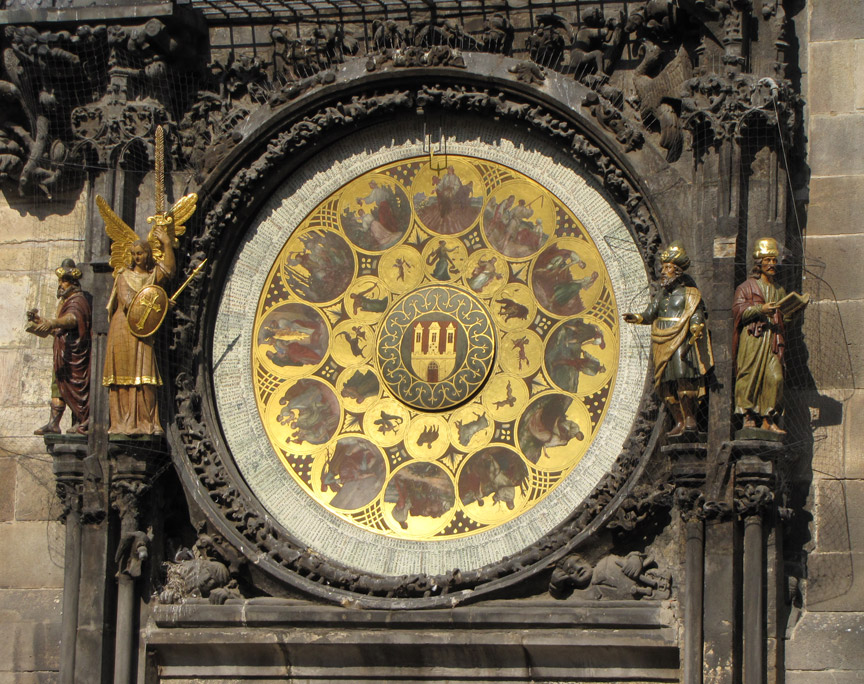
The displacement of the zodiac circle results from the use of a stereographic
projection of the ecliptic plane using the North pole as the basis of the
projection. This is commonly seen in astronomical clocks of the period.
The small golden star shows the position of the vernal equinox, and sidereal
time can be read on the scale with golden Roman numerals.
At the outer edge of the clock, golden Schwabacher numerals are set on a black
background. These numbers indicate Old Czech Time (or Italian hours), with 24
indicating the time of sunset, which varies during the year from as early as
16:00 in winter to 20:16 in summer. This ring moves back and forth during the
year to coincide with the time of sunset.
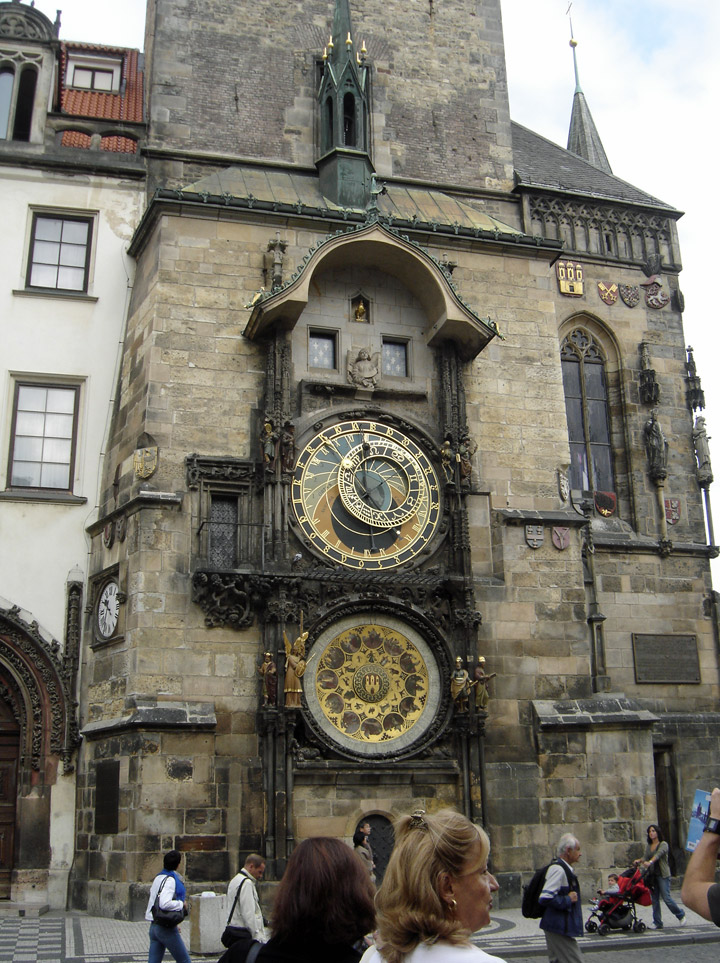
The golden Sun moves around the zodiacal circle, thus showing its position on
the ecliptic. The sun is attached to an arm with a golden hand, and together
they show the time in three different ways:
1. The position of the golden hand over the Roman numerals on the background
indicates the time in local Prague time.
2. The position of the sun over the curved golden lines indicates the time in
unequal hours.
3. The position of the golden hand over the outer ring indicates the hours
passed after sunset in Old Czech Time.
Additionally, the distance of the Sun from the center of the dial shows the time
of sunrise and sunset.
The movement of the Moon on the ecliptic is shown similarly to that of the Sun,
although the speed is much faster. The half-silvered sphere of the moon also
shows the Lunar phase.
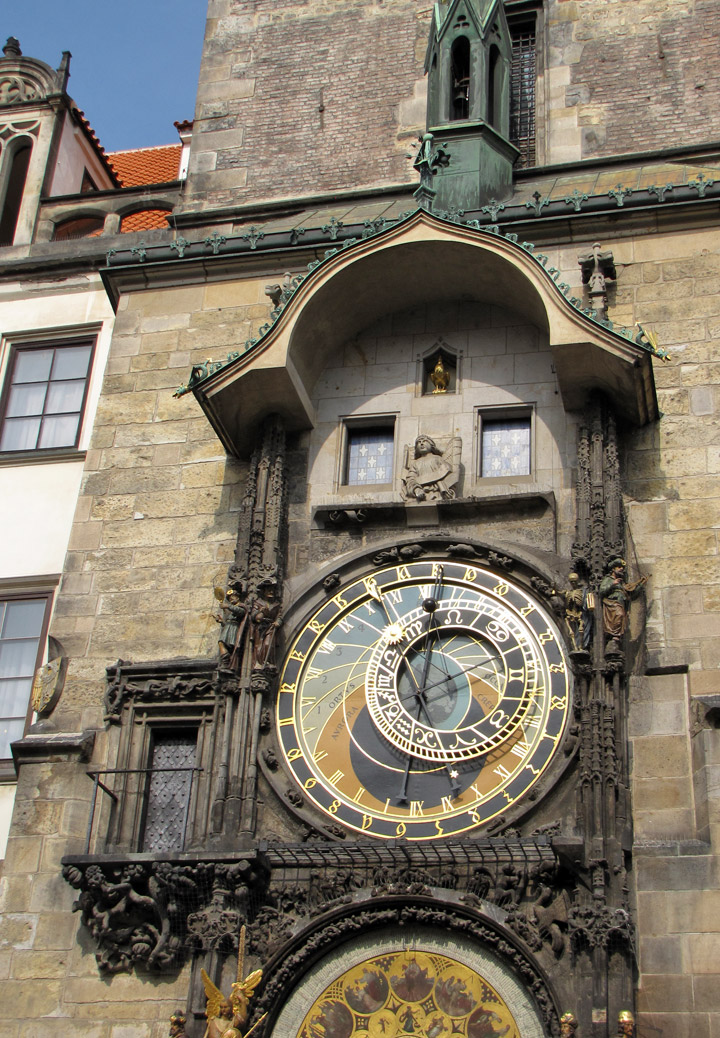
The movements of the various mechanical parts of the astronomical dial are too
slow to appreciate in real time, but become easier to comprehend using a
computer model of Orloj, with an animation here. An animated picture and a
spreadsheet that 'constructs' the clock for each moment in the year and at each
place in the world is to see in a Didactic explanation
Astrock is an implementation of Orloj developed for iPhone. In addition to the
medieval Orloj, it shows the astrolabe for every location on Earth including
equator, North Pole and your current location. Astrock also displays the
movement of the planets for any date and time. The model can be used for an
introduction to the positional astronomy as well as for daily life as the
original Orloj was intended.
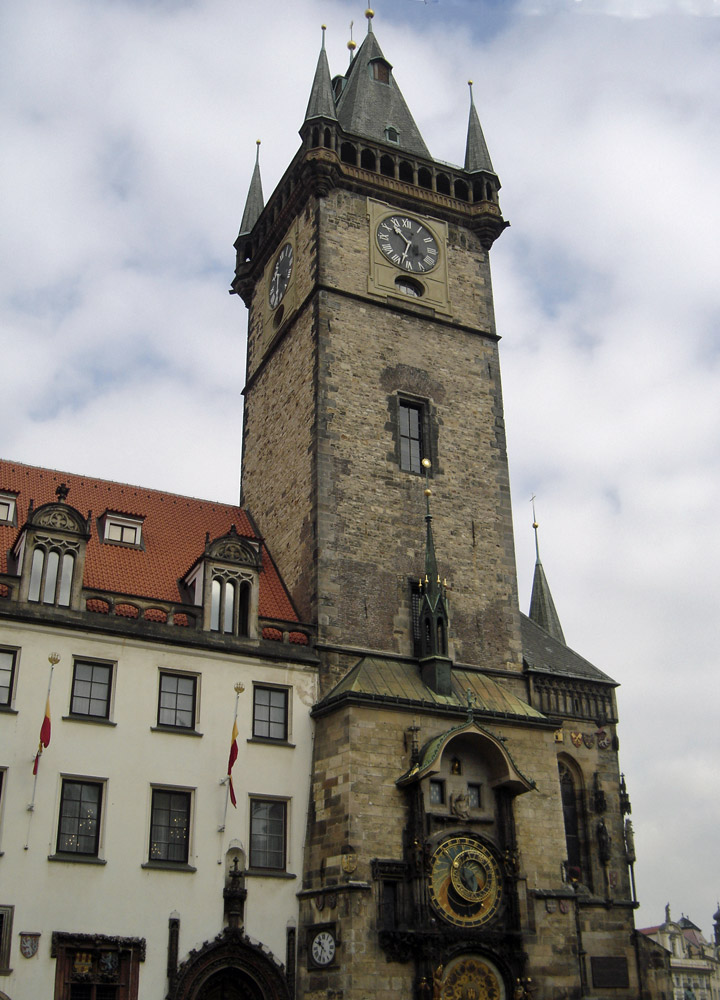
The four figures flanking the clock are set in motion at the hour, these
represent four things that were despised at the time of the clock's making. From
left to right in the photographs, the first is Vanity, represented by a figure
admiring himself in a mirror. Next, a Jew holding a bag of gold represents greed
or usury. Across the clock stands Death, a skeleton that strikes the time upon
the hour. Finally, the infidel Turk wears the Turban.
There is also a presentation of statues of the Apostles at the doorways above
the clock, with all twelve presented every hour.
The calendar below the clock was added in 1870.
Text from Wikipedia